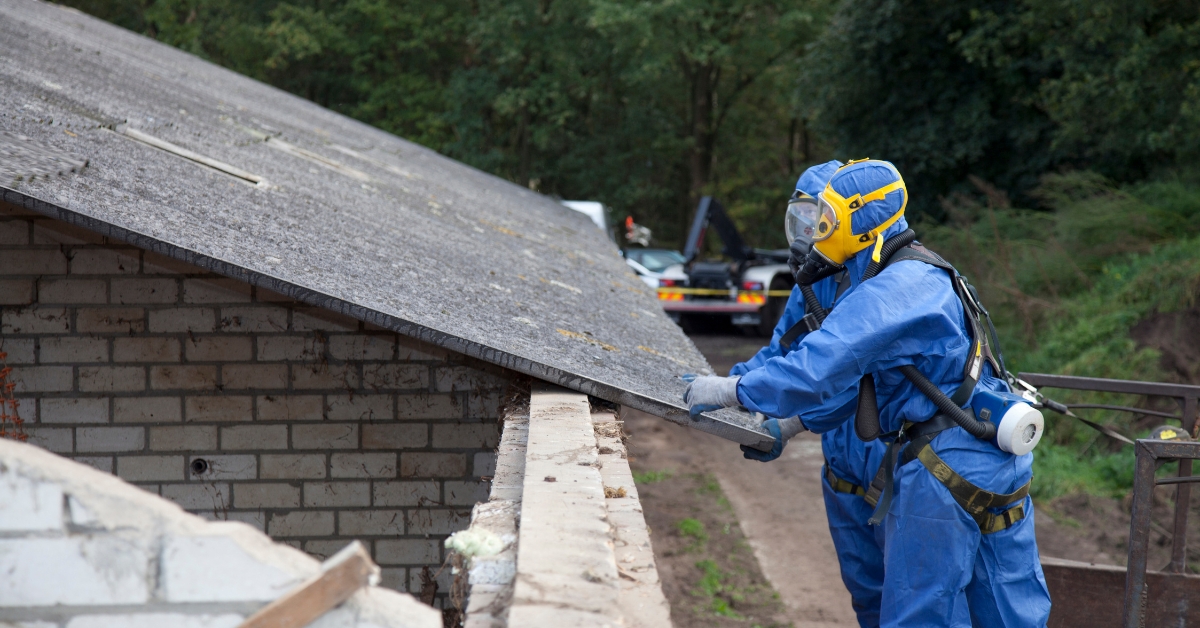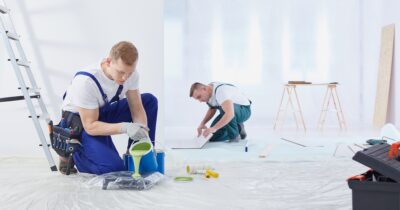Think asbestos isn’t a big deal? Think again.
It might look like any other old building material, but asbestos carries serious risks if disturbed. Despite being banned in many areas, it still exists in countless older buildings — hiding in ceilings, walls, floor tiles, insulation, and roofing. That’s where the real danger lies.
Disturb it, and those tiny fibres get released into the air. Breathe them in, and they can lodge in the lungs. Over time, that exposure can lead to severe health problems.
It’s not just about removing a material. It’s about managing a hazardous substance that’s invisible to the eye but incredibly dangerous to health. And that’s exactly why licensed professionals are essential.
The Hidden Risks of DIY Asbestos Removal
There’s a growing trend of people taking on renovation work themselves, often spurred by cost-cutting or the satisfaction of doing the job hands-on. But when asbestos is involved, that approach becomes more than risky — it can be outright dangerous.
Here’s what makes DIY asbestos removal a problem:
- Lack of training – Professionals undergo rigorous training to understand how asbestos behaves and how to contain it safely. DIYers simply don’t have that expertise.
- No proper equipment – Ordinary tools and dust masks won’t cut it. The fibres are so small they can pass through most filters and settle deep into the lungs.
- Improper disposal – Asbestos isn’t something you can toss into the bin. It needs to be sealed, labelled, and transported following strict regulations.
- Unknowingly spreading contamination – Without sealed zones, wetting techniques, and proper clean-up, fibres can easily spread throughout the property and beyond.
The danger isn’t just to the person doing the work. It puts everyone in the home or building at risk — family members, tenants, neighbours, and even pets. You may think you’re saving money, but the cost of medical treatment, fines, or specialist clean-up after a failed DIY attempt is far higher.
What Makes Asbestos So Dangerous?
It’s not always visible. You won’t smell it. You won’t taste it. But once asbestos is disturbed, it becomes airborne.
When these fibres are inhaled, they can get trapped in the lungs and stay there for years. Over time, they cause inflammation and scarring, eventually leading to serious diseases such as:
- Asbestosis
- Mesothelioma
- Lung cancer
- Pleural thickening
The real issue is latency. These conditions often don’t show up until 20 or 30 years after exposure. By the time symptoms appear, it’s usually too late to reverse the damage. That’s why safety around asbestos is so tightly regulated — and why trained professionals, like those at Suffolk Asbestos Solutions, are the only ones who should be handling it.
What Professional Removal Actually Involves
It’s easy to underestimate just how involved the process is. Professional asbestos removal isn’t simply about scraping something off and throwing it away. It’s a detailed, regulated process from start to finish.
Here’s what typically happens:
- Survey and testing – Experts begin with a full inspection of the site. Samples are taken and tested in a lab to confirm if asbestos is present and identify the type.
- Planning and risk assessment – Every job requires a specific plan to manage the risks. The removal strategy is tailored to the material, location, and building structure.
- Setting up containment – Before any removal begins, professionals seal off the area, often using plastic sheeting and negative pressure systems to stop fibres escaping.
- Use of protective gear – Licensed teams wear full protective suits and respirators that meet safety standards.
- Safe removal and disposal – The asbestos is carefully removed using specialist techniques, placed in double-sealed containers, and transported to licensed disposal sites.
- Final inspection and air monitoring – Once the removal is complete, the air is tested to ensure the area is safe to re-enter.
This isn’t something that can be improvised or half-done. Every step is legally required for a reason. Professionals follow these procedures to ensure that no one is put at risk — not during the job, and not afterwards.
Legal Requirements You Might Not Know About
In many places, it is illegal to remove certain types of asbestos unless you are licensed to do so. Even small-scale removal jobs may require notification to the appropriate authorities and strict documentation.
Trying to bypass these rules, even unintentionally, can lead to:
- Heavy fines
- Legal action
- Delays in selling or leasing a property
- Additional remediation costs
Beyond the legal side, insurance companies often won’t cover any asbestos-related damage or contamination caused by unlicensed work. So if things go wrong, you’re left carrying the full cost.
Signs That You Might Be Dealing with Asbestos
Not every old material contains asbestos, but many do. If your property was built before the early 2000s, there’s a chance asbestos may still be present. Common areas include:
- Roofing sheets and shingles
- Wall and ceiling panels
- Vinyl floor tiles and adhesives
- Pipe insulation
- Lagging on boilers and tanks
- Textured wall coatings
It’s often impossible to tell just by looking. That’s why testing is always the first step. Guesswork has no place when asbestos is involved.
So, Why Bring in the Pros?
Let’s be clear. Hiring professionals isn’t just about ticking a box. It’s about safeguarding health, following the law, and avoiding major financial setbacks.
Here’s what qualified experts bring to the table:
- Peace of mind – You know the job is being handled safely and legally.
- Proper certification – Once complete, you receive the necessary paperwork to prove the area has been cleared.
- No future surprises – No lingering fibres, no contamination, and no costly mistakes that come back years later.
- A faster, cleaner process – With the right tools and experience, professionals get the job done efficiently, without disrupting the entire property.
Trying to do it yourself can end up costing more, taking longer, and risking lives. It’s simply not worth it.
When Health Isn’t Worth the Gamble
Cutting corners with asbestos removal isn’t just unwise, it can be life-altering. The risks are long-term and potentially fatal. The process is detailed, regulated, and far more complex than most people realise. Professionals have the training, equipment, and legal clearance to carry out the work safely.
So if there’s even a chance your building contains asbestos, don’t touch it. Don’t drill it. Don’t sand it.
Call the right people and let them handle it properly. Because when it comes to asbestos, getting it wrong isn’t an option.










